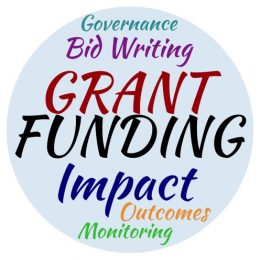 Having looked at how to find and approach funders, we will now look at how to re-package your activities to become more fundable.
Having looked at how to find and approach funders, we will now look at how to re-package your activities to become more fundable.
Consider a charity or church that ‘works with people in need in their local community’. It costs £50,000 a year to run. Surely the charity just needs four funders to chip in £10,000 per year towards their overall running costs, alongside some regular personal donations and local church support, and their funding requirements will be fully met. Oh that it were that simple! Unfortunately it rarely is. But there are things you can do to help.
- Split your activity into different fundable projects directly linked to outcomes and impact.
 In general, funders need to be specific with what they fund, so that normally means they want to fund:
In general, funders need to be specific with what they fund, so that normally means they want to fund:
- a specific activity
- for a specific group of people
- which is aiming to achieve a specific set of outcomes
- over a specific period of time
- that matches what they want to see changed in people’s lives or society in general.
A project can be a new activity, an existing activity, or the development of a pre-existing activity. It can have a variety of manifestations:
- Capital Project
Typically this is to build, renovate or purchase something that will be used for several years to come to make a positive difference to lives in a community. - Revenue Project
You can also have a number of different Revenue Projects running at the same time – such as supporting young people with mental health issues, reducing isolation for older people, working to strengthen vulnerable families.
Projects are usually time-bounded by funders, normally to one year from the awarding of funds which cover the direct costs of running activities that make a difference to people’s lives.
- Consider splitting an activity into fundable chunks.
 The majority of grant funders will fund around £5,000. However the costs of running your family support service helping 20 families may cost £20,000 per year.
The majority of grant funders will fund around £5,000. However the costs of running your family support service helping 20 families may cost £20,000 per year.
Rather than trying to find one funder to give you £20,000, you can split your family support work into four parts and create a project application that enables the funder to fund you to work with 5 families per year.
You can then happily get four of these funders to award you funds, knowing that you are not receiving double-funding but that the funding is for specific families.
- Split your activities on a needs basis.
Families are likely to need support for different reasons such as family breakdown, which results in single parenting units, or families with significant mental health needs or which have children with disabilities etc.
Some families inevitably need more input, and therefore more time, than others, so one project of £5,000 may expect to work with only three families whilst another may be able to support seven families for the same funding.
If the project is targeted at funders who want to support families with these specific needs, then the closer you can match your activity with their funding criteria the more likely you are to be successful.
In the next part of our Good Practice in Grant Fundraising series we will talk about Charity Income and making sure you get your money right.
For further information or to answer any queries please contact Julia Miller direct
